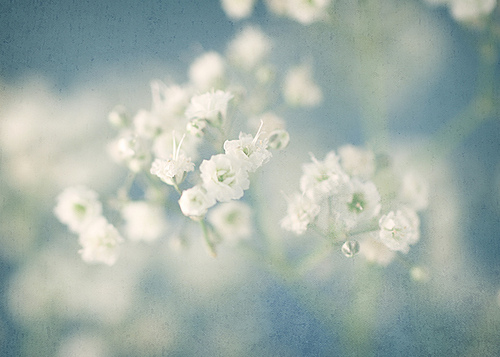
The History Of Baby’s Breath
No matter how often you order or send flowers, you surely are familiar with a certain little flower called baby’s breath. If roses are like bread to a florist, baby’s breath is the butter. They top off any arrangement with their simple, tiny blooms and very little else is necessary once you get these guys involved. Baby’s breath are commonly used as what is known as filler flowers. Your focal flowers in an arrangement form the main focus point, as the name suggests. The mass flowers add fullness to the bouquet but are an optional extra. Mass flowers, for example, aren’t required in a bouquet that consists purely of roses and a filler. Then the fillers are there to act in the same way as foliage but they will add colour as well as texture to the arrangement.
Baby’s breath, also called gysophila paniculata, is originally from Eastern Europe. They grow in sandy, dry soil. It is interesting to know that the work gysophila actually means chalk-loving and this name comes from the conditions preferred by the baby’s breath plant. Johann Amman, a Swiss-Russian botanist, sent the first samples of the plant from St Petersburg. The sample travelled all the way to Linnaeus.

Baby’s breath quickly became popular and cultivated in countries like Peru. In fact, a large amount to Peru’s flower exports are thanks to baby’s breath alone! I suppose this is understandable considering the flower can be used in any kind of arrangement, bouquet and even added to one’s hair to add that special touch. Baby’s breath can be added no matter the size of the bouquet. They work very well in bud arrangements, boutonnières and corsages too.
In areas such as Chicago, this plant is considered and even classified as an invasive species. Clearly the conditions in these areas are just perfect for the plant to grow and there is just about no stopping it! Many probably wonder why this would even pose a problem since these flowers are so very useful and popular.
Over the years, a so-called language of flowers was developed and today these flowers are associated with meanings that include purity, innocence and everlasting love. Because of these meanings, it is better understood why so many brides choose to include them in their wedding flowers. Also, as with most other flowers, there are a number of different types of baby’s breath and, since they are normally found in white and perhaps light pink, they can be tinted according to your colour scheme too.
There is no doubt that, based on the successful history of this plant and flower, it will continue to be a vital part of any florist’s permanent stock. They last quite long too and, even if they start to wilt just a little, it’s not all that noticeable since they are so small.
